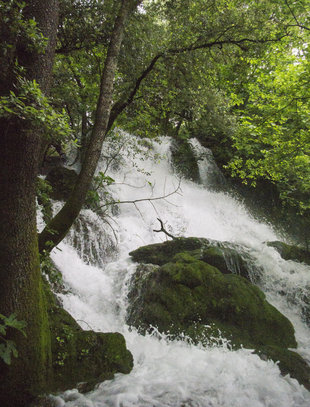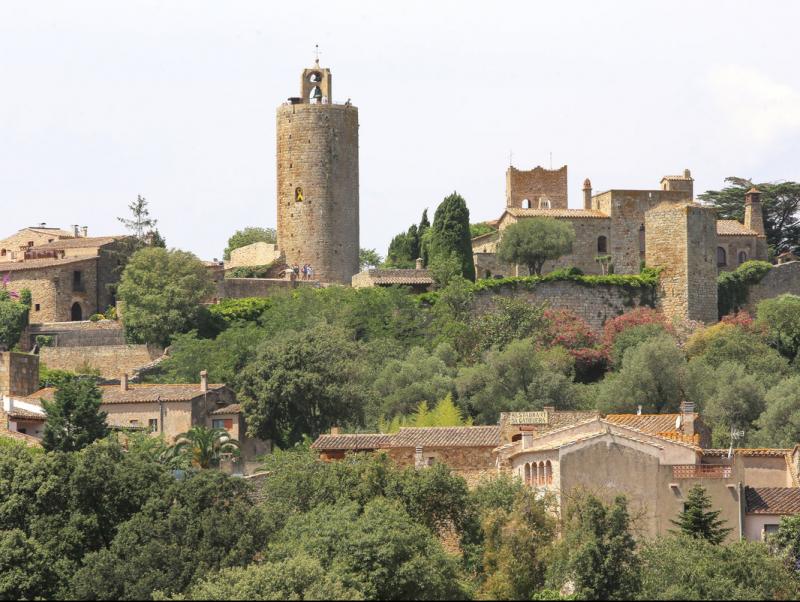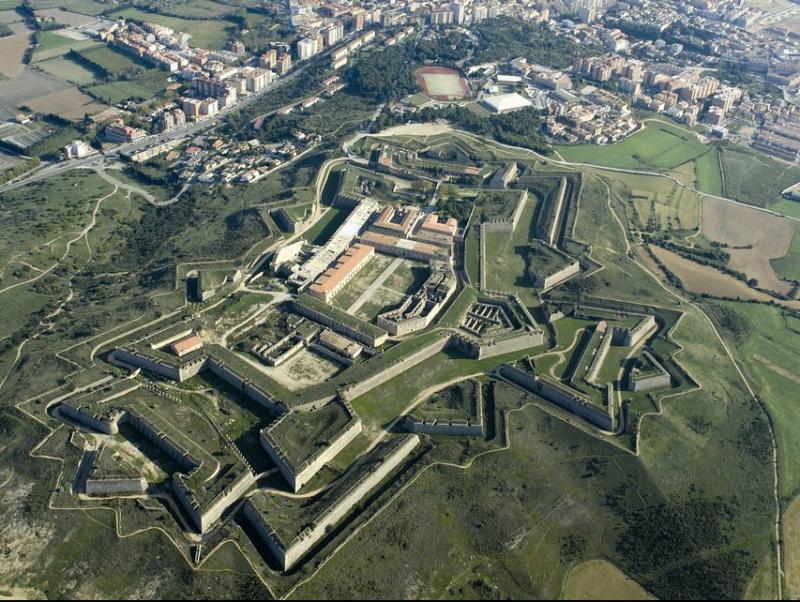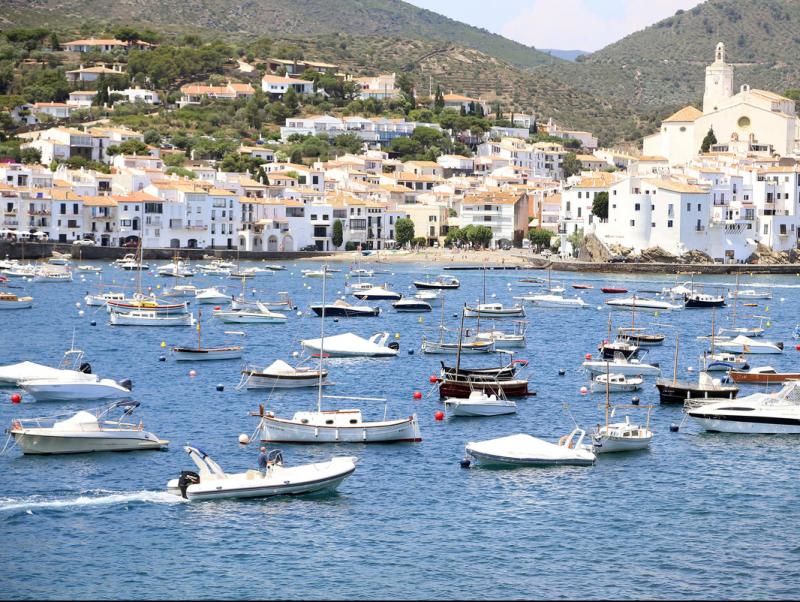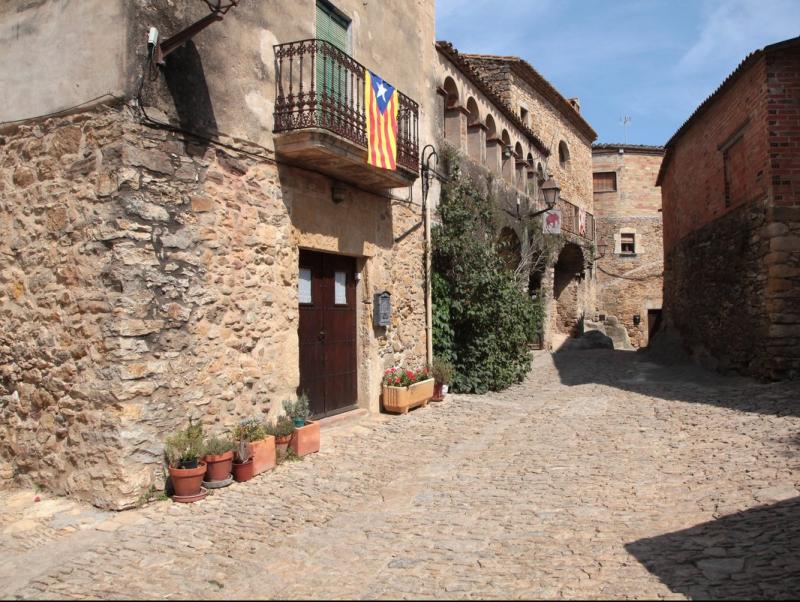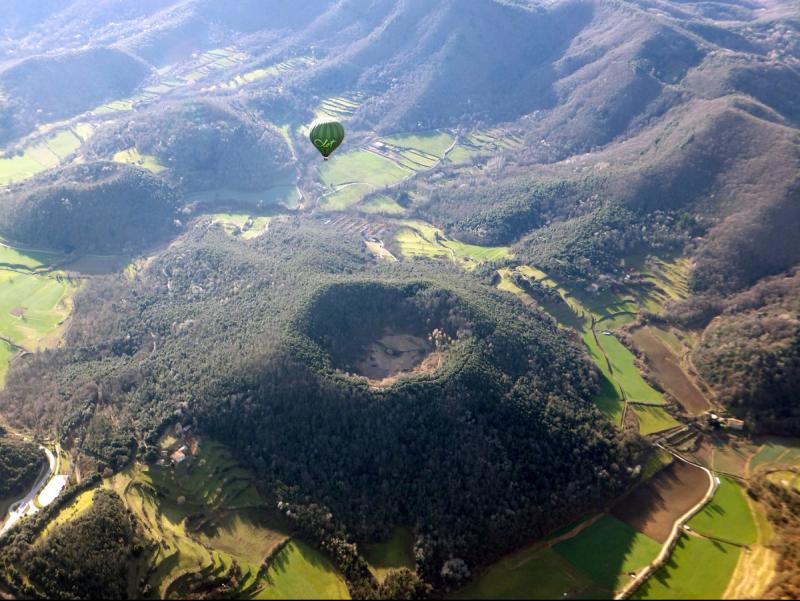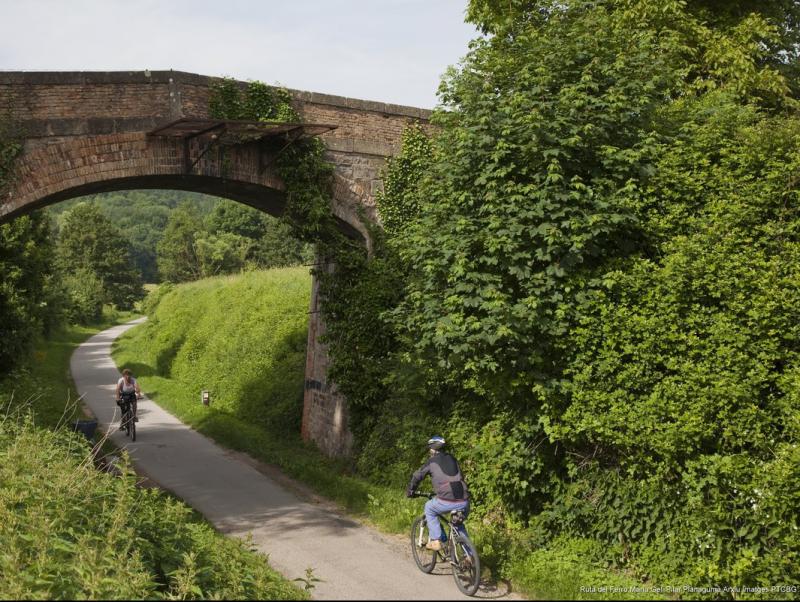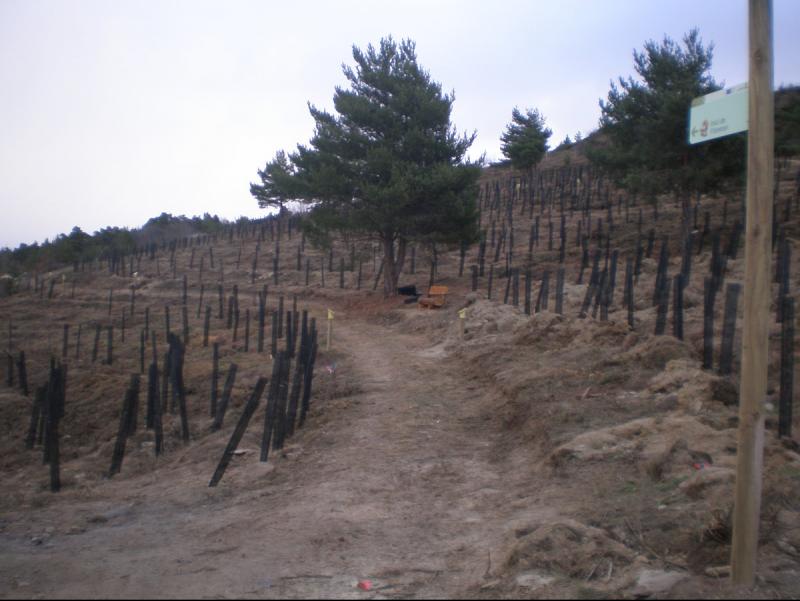Romanesque, between plains, hills and water
The Pla de Martís extends to the north of the Pla de l’Estany like a tapestry of all shades of green, and the whole plain is connected by an extensive network of paths and trails that run between fields and hills.
There are many viewpoints from which to take in the Pla de l’Estany: Mare de Déu del Mont mountain, Guaita Ginestar tower, the peak of Puig Clarà… But the best view is from the heights of Rocacorba. From there, a little above Banyoles and to the north, the Pla de Martís reveals its uniform landscape of gentle undulations and river valleys. To the east, bordering the area of Terraprim, it opens up into the region of Empordà; to the west, into La Garrotxa, and to the north is the mountain of the Mare de Déu del Mont. The backdrop is the imposing Canigó peak.
The Pla de Martís is an agricultural plain that encircles the towns of Martís, Serinyà, Usall, Melianta and Centenys, between the municipalities of Serinyà, Porqueres, Esponellà and Fontcoberta. The whole plain is connected by a network of paths and trails that cross the fields and gentle hills covered by holm oaks, oaks and pine groves.
There are plenty of natural springs and in springtime, after days of rain and thawing, natural pools form that come from the same underground currents as those that fill Banyoles Lake. The largest is the Espolla hollow, otherwise known as Espolla beach. All the water contained in the pools drains through the Espolla irrigation canal to the Martís cascade, which is made up of several waterfalls with a drop of just over a hundred metres.
The large Espolla waterfall is spectacular, and there is a viewpoint and a small itinerary to follow. After the waterfalls, the water gently descends to the Fluvià River, forming gorges.
This small medieval stone construction crosses the Espolla canal. It consists of a pointed arch with a low stone rail that follows the bridge’s triangular shape. Next to the bridge is the cross of the locality. While only a small landmark, it is worth stopping to take a look at its simple charm.
Medieval heritage
The Martís plain is charged with history at every step. There are isolated hermitages, such as Mare de Déu de la Font, a Romanesque construction close to the fountain from which it takes its name and that was formerly believed to be miraculous. The area also has agricultural neighbourhoods that go back to medieval times, such as La Farrès, with its large houses that resemble fortified palaces. In the centre of Fontcoberta is Sant Feliu church, an imposing Romanesque building that features elements of various restorations, such as its Renaissance portal. To the east of the church is Can Pujol, a stately farmhouse with a defensive tower and a large covered terrace with two watchtowers at its corners. This fortified house dates from 1295 and is representative of the architecture of the time and territory.
Further east, three kilometres southeast of Vilavenut, is the hilltop church of Santa Caterina d’Espasens and the remains of the castle, dating from the 11th and 12th centuries, with stunning views of the Pyrenees.
out & about
Clot d’Espolla tadpole shrimp
This crustacean resembles a shrimp, with its antennae, three eyes and a forked tail. It has adapted to places that are temporarily flooded and has been labelled a living fossil, it being a species that already existed during the Triassic period (250 million years ago). When the pond dries up, the females lay their eggs in the mud, where they can remain without drying out for years. They hatch a few days after a flood and their short life cycle begins. The creature’s long-standing presence here is mainly due to an absence of predators.




